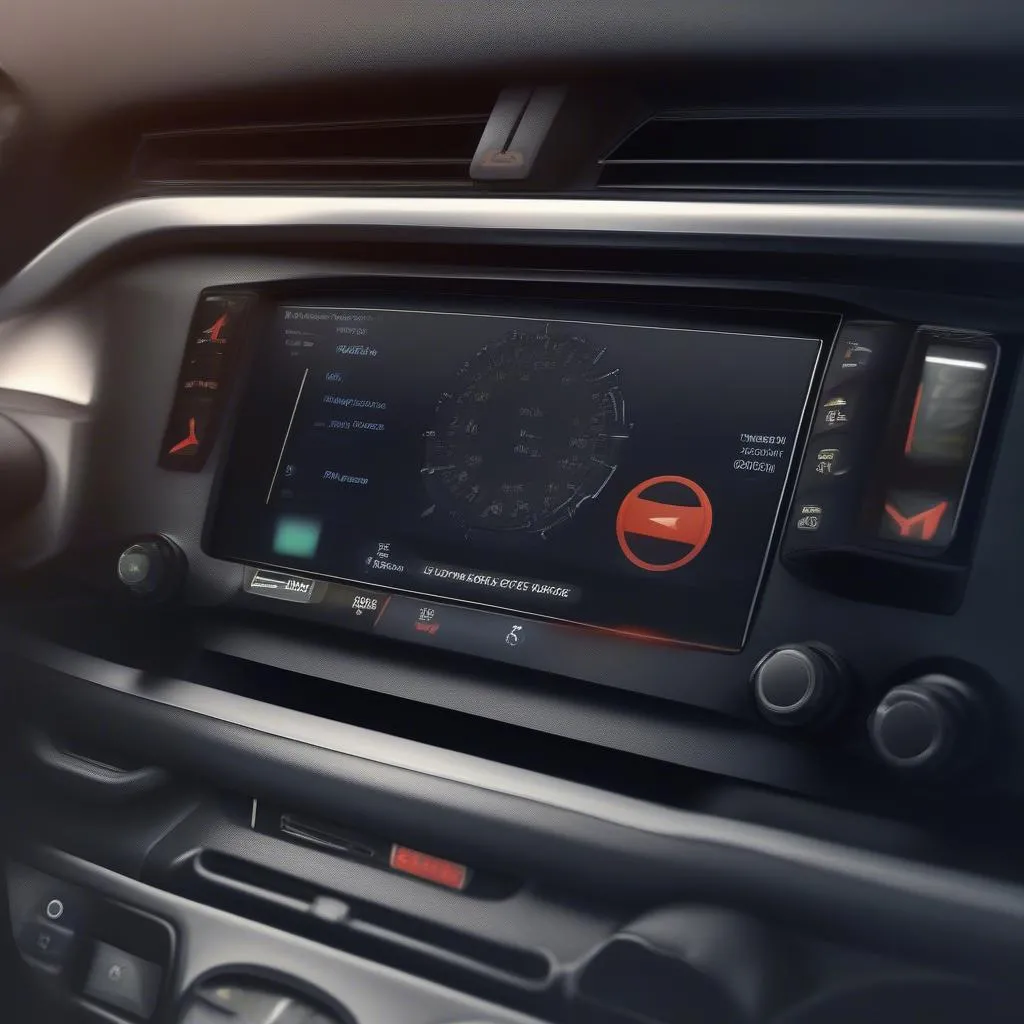The 258 Collision Warning System (CWS) with Forward Collision Warning (FCW) and Stop Active Brake Application is a cutting-edge safety technology that enhances driver awareness and helps prevent accidents. This system utilizes advanced sensors and algorithms to detect potential collisions and assist the driver in taking necessary actions.
Understanding How the System Works
The 258 Collision Warning System utilizes a combination of sensors and algorithms to monitor the surrounding environment and detect potential collisions. These sensors typically include:
- Radar sensors: These sensors emit radio waves that bounce off objects in the vicinity, allowing the system to measure distance and relative speed.
- Cameras: Cameras capture visual information about the surrounding environment, helping the system identify potential hazards.
The system uses these sensor inputs to process information and generate alerts when a potential collision is detected. In the case of the 258 CWS with FCW-Stop Active Brake Application, the system can:
- Issue an audible warning: The system emits a loud warning sound to alert the driver of a potential collision.
- Display a visual warning: The system may display a visual warning on the dashboard or head-up display (HUD) to further alert the driver.
- Apply automatic emergency braking: In critical situations where the driver fails to react, the system can automatically apply the brakes to mitigate or prevent a collision.
Features of the 258 Collision Warning System
The 258 Collision Warning System offers various features designed to enhance driver safety and provide greater peace of mind:
- Forward Collision Warning (FCW): This feature alerts the driver to a potential collision with a vehicle ahead. The system monitors the distance and speed of the vehicle ahead, and if a collision is predicted, it alerts the driver.
- Automatic Emergency Braking (AEB): In critical situations where the driver fails to react to an imminent collision, the AEB system automatically applies the brakes to mitigate or prevent the collision.
- Stop Active Brake Application: This feature allows the AEB system to bring the vehicle to a complete stop in certain situations, helping to prevent or minimize the impact of a collision.
Benefits of Using the 258 Collision Warning System
The 258 Collision Warning System offers numerous benefits for drivers, including:
- Enhanced driver awareness: The system helps drivers stay aware of their surroundings and potential hazards, improving reaction time and potentially avoiding accidents.
- Reduced risk of collisions: The system’s ability to detect potential collisions and alert the driver can significantly reduce the risk of accidents, particularly in situations where driver distraction or inattention may occur.
- Increased passenger safety: By mitigating or preventing collisions, the system helps protect passengers from potential injuries.
- Improved driving confidence: The system can provide drivers with greater confidence by helping them navigate challenging driving situations.
When to Use the 258 Collision Warning System
The 258 Collision Warning System is designed to be used in various driving scenarios. It is particularly beneficial in:
- Heavy traffic: When traffic is congested, the system can help monitor traffic flow and alert the driver to potential collisions.
- Low-visibility conditions: In situations like fog, rain, or darkness, the system can provide an extra layer of safety by detecting hazards that may be difficult to see.
- Driver distraction: If a driver is distracted, the system can provide an alert to help them avoid a collision.
Maintaining the 258 Collision Warning System
To ensure the 258 Collision Warning System operates optimally, it is important to:
- Regularly inspect the sensors: Make sure the radar sensors and cameras are clean and unobstructed.
- Perform software updates: Software updates can improve system performance and address any known issues.
- Seek professional assistance: If you notice any issues with the system, consult a qualified technician for diagnosis and repair.
FAQs About the 258 Collision Warning System
Q: What is the difference between FCW and AEB?
A: FCW is a warning system that alerts the driver to a potential collision. AEB automatically applies the brakes to mitigate or prevent a collision.
Q: Does the 258 Collision Warning System work in all conditions?
A: The system’s effectiveness may vary depending on factors like weather conditions, road surface, and the speed of the vehicle.
Q: Can I disable the 258 Collision Warning System?
A: It is generally recommended not to disable the system as it provides an important safety feature. However, some vehicles may allow disabling the system in certain circumstances.
Q: What should I do if the 258 Collision Warning System alerts me?
A: If the system alerts you, slow down and assess the situation. Take appropriate action to avoid a collision.
Q: How can I learn more about the 258 Collision Warning System in my vehicle?
A: Consult your owner’s manual or contact your vehicle’s manufacturer for detailed information about the system.
Q: Is the 258 Collision Warning System available for all vehicles?
A: Not all vehicles are equipped with the 258 Collision Warning System. Check your vehicle’s specifications to determine if it is available.
Conclusion
The 258 Collision Warning System with FCW-Stop Active Brake Application is a valuable safety feature that can significantly improve driver awareness, reduce the risk of collisions, and enhance passenger safety. By understanding how the system works, its benefits, and best practices for maintenance, drivers can make the most of this advanced technology to create a safer driving experience.

